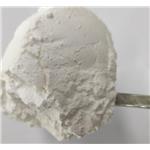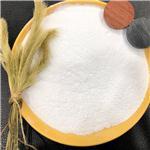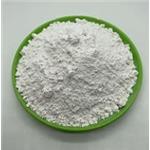Levamisole: Pharmacology and Clinical Applications in Dermatology
Sep 10,2024
General Description
Levamisole, known as the levo-isomer of tetramisole, is an effective agent in both pharmacology and dermatology. Pharmacokinetically, Levamisole is rapidly absorbed, with peak blood levels reached within 1.5 to 4 hours and a plasma half-life of approximately 16 hours. It serves as a nicotinic acetylcholine receptor agonist, enhancing immune responses through effects on T-lymphocytes and macrophages. Clinically, Levamisole is beneficial in treating warts, cutaneous leishmaniasis, and herpesvirus infections, demonstrating improved outcomes when combined with other agents. Despite promising results, further research is needed to fully establish its efficacy and optimize treatment protocols in dermatology.

Figure 1. Levamisole
Pharmacology
Pharmacokinetics
Levamisole is the levo-isomer of tetramisole and is known for its excellent solubility in water, which facilitates its rapid absorption from the gastrointestinal tract. After administration, peak blood levels of Levamisole are typically reached within 1.5 to 4 hours. The pharmacokinetics of Levamisole are characterized by a plasma half-life of approximately 16 hours, indicating a relatively prolonged duration of action. This drug undergoes significant metabolism in the liver, affecting its overall efficacy and safety profile. For standard treatments, Levamisole is generally administered at a dosage of 150 milligrams per day, typically for a duration of 2 to 4 days each week. However, in cases involving malignancies or immunodeficiencies, higher dosages or extended treatment regimens are often recommended to optimize therapeutic outcomes. 1
Mechanism of Action
Levamisole's pharmacological effects are largely attributed to its role as an agonist of nicotinic acetylcholine receptors, which is pivotal for its antihelminthic properties. Beyond its antiparasitic activity, Levamisole exhibits a broad range of immunomodulatory effects that significantly influence immune system dynamics. It primarily targets macrophages and T-lymphocytes, enhancing their functional capabilities, including phagocytosis, chemotaxis, and intracellular killing. Notably, Levamisole has a pronounced effect on T helper-1 cells, leading to increased production of interleukin-2, interleukin-12, and interferon-gamma. Additionally, it has been shown to counteract endogenous immunosuppressive factors, thereby inhibiting elevated B-cell activity. This inhibition is reflected in decreased levels of immunoglobulin G, immunoglobulin M, and circulating immune complexes. Furthermore, Levamisole demonstrates anti-anergic properties, which help restore immune responses in individuals with suppressed immunity, while maintaining minimal effects in those with intact immune systems. 1
Clinical Applications in Dermatology
Warts
Levamisole has been explored for various clinical applications in dermatology, notably in the treatment of warts, which are benign skin tumors caused by the human papillomavirus. This common dermatological issue can sometimes be challenging to treat, resulting in the need for effective management strategies. Studies have demonstrated that Levamisole, when combined with cimetidine, significantly improves outcomes in patients with recalcitrant warts. In a double-blind comparative trial involving 48 patients, those receiving Levamisole alongside cimetidine displayed a marked to complete response rate of 75 percent, compared to only 41.6 percent in the cimetidine-only group after 12 weeks of treatment. Additionally, the average regression periods for the combination therapy group were significantly shorter, at 7 weeks compared to 10 weeks for the cimetidine group. However, some randomized controlled trials indicated no statistically significant enhancement in wart resolution with Levamisole monotherapy, pointing to the necessity of further investigation into its efficacy. 2
Cutaneous Leishmaniasis
Levamisole has also been shown to be effective in managing cutaneous leishmaniasis, a parasitic infection that causes chronic skin lesions and scarring. The therapeutic potential of Levamisole in this context is particularly promising, with studies highlighting the complete clearance of lesions in patients treated with Levamisole at a dosage of 150 mg twice weekly over two months. In one study, notable success was achieved in 28 patients, all of whom experienced significant improvement without serious adverse effects. Other researchers have corroborated these findings, suggesting that Levamisole could be a safe and effective option for treating cutaneous leishmaniasis. Nevertheless, while results are encouraging, more extensive and rigorous studies are required to further establish the role of Levamisole in this and other dermatological conditions, paving the way for potential treatment protocols. 2
Herpesvirus Infections
In addition to warts and cutaneous leishmaniasis, Levamisole has demonstrated utility in managing herpesvirus infections, including herpes labialis and herpes genitalis. In a randomized controlled trial involving 33 patients, those treated with Levamisole exhibited significant reductions in the frequency, duration, and severity of herpes outbreaks compared to a placebo group. Specifically, 33 percent of patients with recurrent herpes genitalis achieved a complete response, alongside a notable percentage showing partial improvements. Moreover, a double-blind controlled trial indicated that Levamisole treatment led to a decrease in the number of recurrences and aided in faster healing of herpes zoster lesions when used alongside acyclovir. This evidence suggests that Levamisole not only enhances treatment efficacy in herpesvirus infections but also supports the importance of integrating immunomodulatory therapies into dermatological care to improve patient outcomes in managing chronic viral conditions. 2
Reference
1. Gupta M. Levamisole: A multi-faceted drug in dermatology. Indian J Dermatol Venereol Leprol. 2016; 82(2): 230-236.
2. Scheinfeld N, Rosenberg JD, Weinberg JM. Levamisole in dermatology : a review. Am J Clin Dermatol. 2004; 5(2): 97-104.
- Related articles
- Related Qustion
- The brief introduction of Levamisole Jun 26, 2024
Levamisole is an anthelmintic agent effective against A. lumbricoides and Ancylostoma duodenale.
- Synthesis and Toxicology of Levamisole Oct 11, 2022
Levamisole is commonly used for deworming of various animals and is effective against both adults and larvae.
Dexamethasone is a glucocorticosteroid used in the treatment of different inflammatory conditions related to allergic disorders, skin conditions and lupus, psoriasis, ulcerative colitis, arthritis and respiratory disorders.....
Nov 13,2024APIL(+)-Tartaric acid, found mainly in grapes, affects fruit acidity and flavor while stabilizing redox states and aiding antioxidant defenses during ripening.....
Sep 10,2024APILevamisole
14769-73-4You may like
- Levamisole
-

- $50.00 / 1kg
- 2024-11-16
- CAS:14769-73-4
- Min. Order: 1kg
- Purity: 99%
- Supply Ability: 10000 Kilogram/Kilograms per Day
- levamisole
-

- $10.00 / 1ASSAYS
- 2024-11-16
- CAS:14769-73-4
- Min. Order: 1ASSAYS
- Purity: 99%
- Supply Ability: 10 ton
- Levamisole
-

- $100.00/ kg
- 2024-11-16
- CAS:14769-73-4
- Min. Order: 1kg
- Purity: 99%
- Supply Ability: 5000






